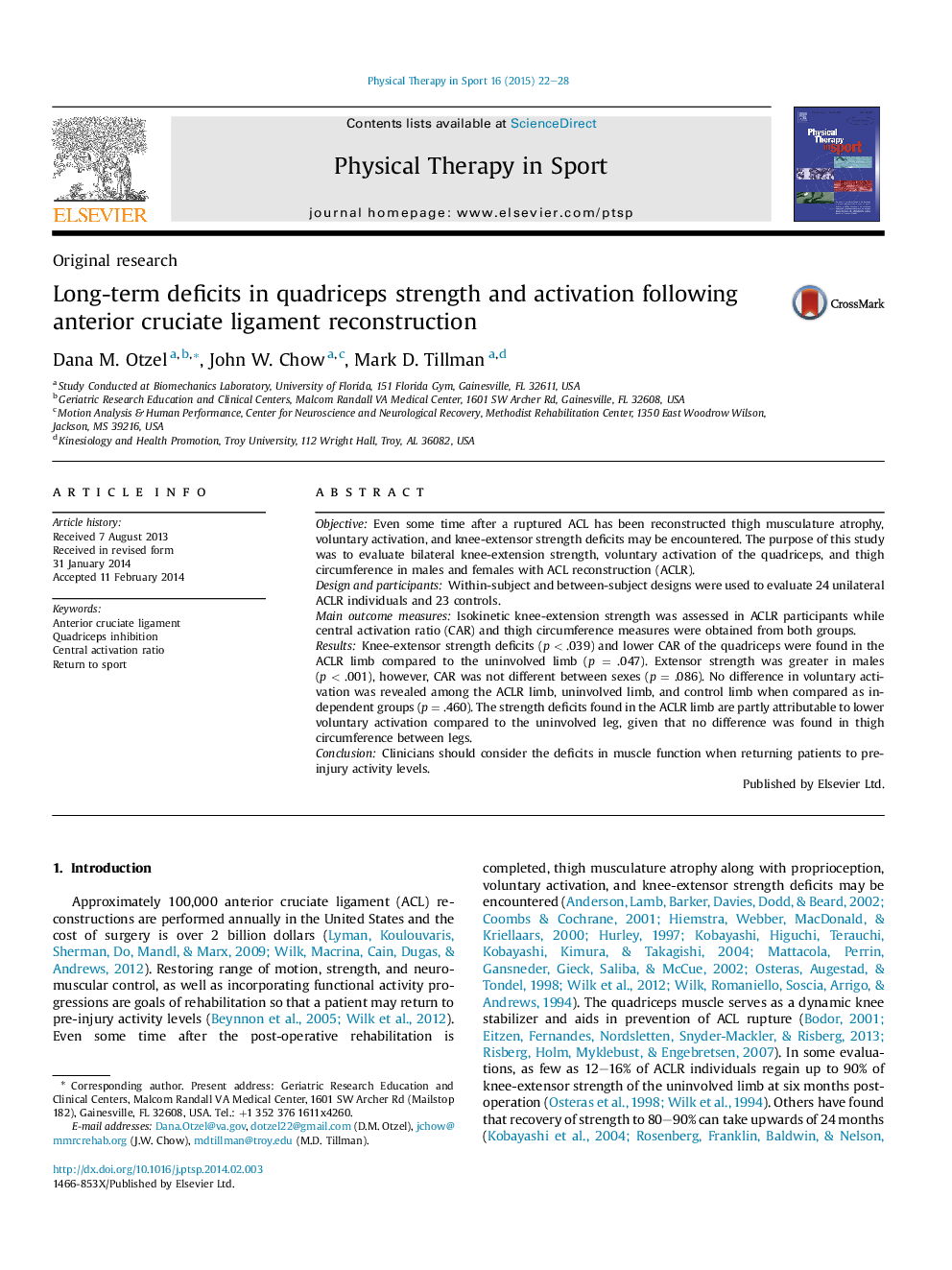| Article ID | Journal | Published Year | Pages | File Type |
|---|---|---|---|---|
| 2705814 | Physical Therapy in Sport | 2015 | 7 Pages |
ObjectiveEven some time after a ruptured ACL has been reconstructed thigh musculature atrophy, voluntary activation, and knee-extensor strength deficits may be encountered. The purpose of this study was to evaluate bilateral knee-extension strength, voluntary activation of the quadriceps, and thigh circumference in males and females with ACL reconstruction (ACLR).Design and participantsWithin-subject and between-subject designs were used to evaluate 24 unilateral ACLR individuals and 23 controls.Main outcome measuresIsokinetic knee-extension strength was assessed in ACLR participants while central activation ratio (CAR) and thigh circumference measures were obtained from both groups.ResultsKnee-extensor strength deficits (p < .039) and lower CAR of the quadriceps were found in the ACLR limb compared to the uninvolved limb (p = .047). Extensor strength was greater in males (p < .001), however, CAR was not different between sexes (p = .086). No difference in voluntary activation was revealed among the ACLR limb, uninvolved limb, and control limb when compared as independent groups (p = .460). The strength deficits found in the ACLR limb are partly attributable to lower voluntary activation compared to the uninvolved leg, given that no difference was found in thigh circumference between legs.ConclusionClinicians should consider the deficits in muscle function when returning patients to pre-injury activity levels.
